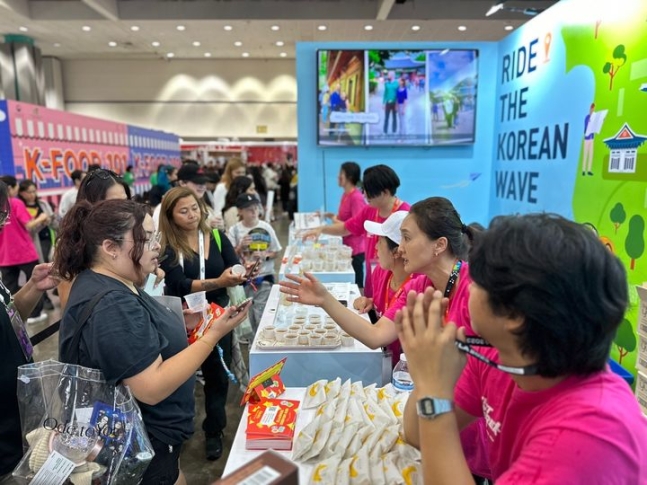
Social and online media users from 20 major countries visiting Korea are most interested in K-pop, followed by K-food and K-beauty.
The Ministry of Culture, Sports and Tourism and the Korea Tourism Organization released a report on the 10th, “Relationship between K-culture themes and travel to Korea, which are popular in 20 major countries visiting Korea, which are recognized by global social data.” The survey was conducted using global social and online media user data, credit cards, telecommunications companies, and statistical survey data.
From June 2020 to May 2023, K-culture mentions appeared on social and online media in 20 major countries visiting Korea in the order of K-pop (3,6823,578), K-food (4,187,796), K-beauty (9,971,048), and K-content (9,286,145).
Indonesia and France are among the top countries interested in K-pop, the U.S., China, and Turkey are K-food, China, the Philippines, and Indonesia are K-beauty, and the Philippines and Indonesia are among the top K-content countries.
In France, K-pop-related references have tripled from 2020 (average 15,170 cases per month) to 2021 (44,016 cases per month), and continued to increase until June 2023.
The Philippines has seen a significant increase in K-pop references from 2020 to 2022, and K-content references have also more than doubled. There were many references to Korean dramas and OTT platforms related to K-content, and this year, the amount of references related to actor Song Hye-kyo and drama The Glory increased. Philippine shopping malls that sell K-pop goods have also appeared as top hashtags.
According to the survey, K-beauty, K-pop, K-content, and K-food in order affect visits to Korea. According to an analysis using a foreign tourist survey in 2019, K-pop interested people are focusing on K-pop-related activities compared to other themes by enjoying shopping (99.0%), food tourism (78.35%), and K-pop/Korean Wave star-related performance halls (71.4%).
K-food interest groups focus on various experiences such as shopping (98.2%), food tourism (89.3%), and natural scenery appreciation (63.2%), and K-beauty interest groups account for more entertainment and entertainment (27.9%), and beauty and medical tourism (23.3%), in the order of shopping (98.5%), and food tourism (87.2%).

From January 2020 to May 2023, the regions where many foreigners visited Korea and high consumption were in the order of Jung-gu, Incheon, Gangnam-gu, Mapo-gu, and Jongno-gu. Jeju City ranked 11th, Haeundae-gu, Busan, 14th, and Geoje City, South Gyeongsang Province, 22nd.
The average monthly number of visitors and consumption increased this year compared to the previous year in the order of Busan Jung-gu, Busan Jin-gu, Seoul Seodaemun-gu, Seoul Jung-gu, and Incheon Jung-gu, showing outstanding progress in Busan.
“Understanding foreign tourists’ interests and preferences through global social analysis is an essential factor for establishing customized marketing strategies,” said the head of the tourism consulting team. “We expect the results of K-culture-related analysis to be actively used to revitalize tourism in Korea.”
JULIE KIM
US ASIA JOURNAL



